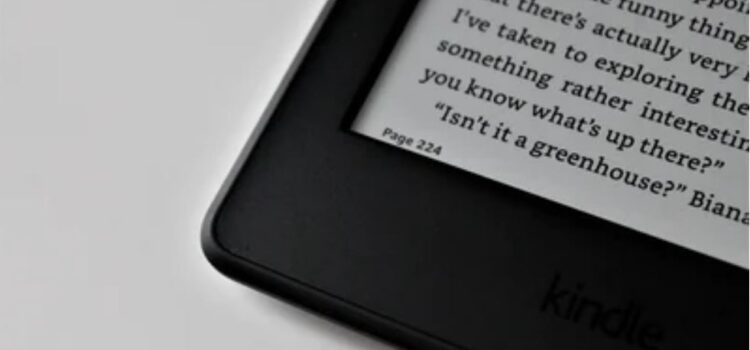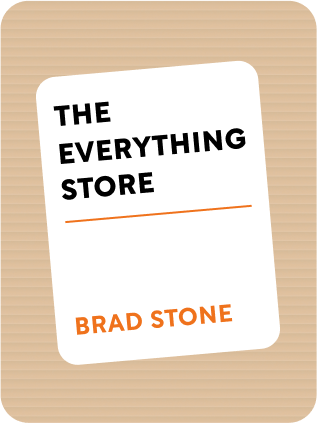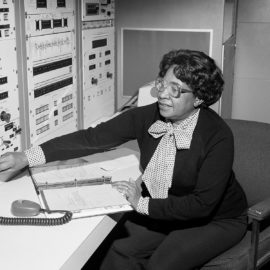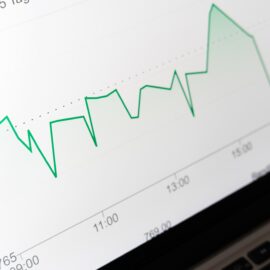

This article is an excerpt from the Shortform book guide to "The Everything Store" by Brad Stone. Shortform has the world's best summaries and analyses of books you should be reading.
Like this article? Sign up for a free trial here .
What were Amazon’s earliest innovations? Which innovations failed and which went on to be huge successes?
2002 marked the year that Amazon would start focusing on innovation. They launched a web service, revamped their website, created a search engine, rolled out the predecessor to Prime, and released the first Kindle all within two years.
Here’s how Amazon’s innovations began.
Amazon’s Relentless Innovation
The early 2000s is marked by continuous Amazon innovations. Many of Amazon’s biggest businesses and features today were developed during this period.
July 2002: Amazon launches Amazon Web Services, a slim shadow of its current form.
- This is inspired by Bezos’s early 2002 meeting with Tim O’Reilly, who suggests building APIs allowing third parties to get data on prices, products, and rankings. “Companies need to think not just what they can get for themselves from new technologies but how they can enable others.” Amazon soon launches these very services.
- Bezos speaks about the importance of becoming a platform at an all-hands.
- Another motivation: Amazon’s project teams need to plead for provisioned infrastructure resources from a central team, which slows down progress.
- Finally, Bezos becomes enamored with the idea of creating primitives – the building blocks of computing – and letting developers create emergently amazing things with it. They brainstorm primitives like storage, bandwidth, processing, messaging, and payments.
- Separate teams then work on services that will eventually become AWS services EC2, SQS, and S3, which will launch in 2006.
“Search Inside the Book”
October 2003: Amazon launches “Search Inside the Book,” allowing customers to search for text within books.
- This extends “Look inside the book,” which mimics the experience of browsing in a physical bookstore.
- Udi Manber, algorithm expert, leads this charge. Bezos gets the goal of having 100,000 books searchable in the new digital catalog.
- “We had a simple argument for book publishers. Think of two bookstores, one where all the books are shrink-wrapped and one where you can sit as long as you want and read any book you want. Which one do you think will sell more books?”
- Regardless, publishers are hesitant about piracy and drag their feet.
- This furthers Bezos’s vision of the Alexandria Project, a bookstore that stocked every book ever written. (But he’s not alone – in 2002, a Google Books project had already begun, and it’s made public in December 2004.)
Amazon’s A9 Search Engine
April 2004: Amazon releases a search engine at A9.com
- A9.com licenses the Google search index but builds features on top of it.
- Amazon is chagrined that Google might offer better search of Amazon than Amazon itself.
- Ultimately this project fails. Google’s hundreds of engineers outpace Amazon’s dozen, and Amazon finds it can’t build a search on top of a rival’s search index.
Spring 2004: Amazon starts selling jewelry. Bezos believes jewelry is Amazon’s next big opportunity – its products are small, prices are high, shipping is cheap.
- It has challenges: jewelry was difficult to display in high detail online; theft in the fulfillment centers was high; jewelry manufacturers clung to high margin prices and refused to budget.
- They decide to let retailers sell on Marketplace, then watch and learn.
- Bezos bristles at following the standard jewelry practices of high markups. He envisions people buying a bracelet on Amazon for $1,200 and getting it appraised at $2,000.
- They make a big push – they introduce the Diamond Search feature, contract with Paris Hilton for exclusivity, and make public announcements in time with Blue Nile’s quarterly reports.
- Ultimately, it turns out customers still want to go into stores to pick out rings; Amazon quietly de-emphasizes the space.
The “Speedy Shipping Club”
2004: Engineer Charlie Ward suggests a speedy shipping club.
- Previously, Super Saver Shipping allowed users to self-identify as less time-sensitive customers. Bezos knows this changed customers’ behavior, motivating them to place larger orders and shop in new categories.
- They also now have overnight, 2-, and 3-day shipping for extra fees. Could they turn the faster shipping into a speedy shipping club with a monthly charge?
- Bezos loves the idea and insists it’s now top priority. “This is a big idea.” He wants the program ready in weeks to make the earnings announcement.
- The program could move so fast because it used Amazon’s existing capabilities. The fulfillment centers could already handle expedited shipping. To handle billing, Amazon Europe had built a subscription membership tool for a Netflix clone.
- They price at $79/year, large enough to matter but small enough to try it out. “It was about changing people’s mentality so they wouldn’t shop anywhere else” – just like Costco.
- Their hunches prove right over the years – the instant gratification of free two-day shipping becomes addictive; people want to maximize the benefits of their sunk cost. (Shortform note: now Amazon adds a host of new features to Prime, like Amazon Video and Kindle reading, all to drive the flywheel effect further.)
The First Kindle
2004: Amazon creates a skunkworks group called Lab126. The mission is to disrupt Amazon’s retail business with an e-book device.
- Brief history of e-readers: In 1997, makers of e-reader Rocketbook (including later Tesla co-founder Martin Eberhard) approaches Amazon for funding. Bezos is impressed but wants exclusivity, to prevent rivals from stealing the future of reading. Parent company NuvoMedia balks and goes to Barnes & Noble instead.
- They sell thousands of devices but tank in the dotcom bubble. It’s said that Rocketbook and other e-books failed because they were ahead of their time. Another contributor to the failure is NuvoMedia selling to Gemstar, which had little interest in developing the devices.
- A picture of the Rocketbook:
- Another motivation for developing an e-reader: In 2003, Apple introduces the iTunes music store, which catapults past Tower Records, Amazon, and Walmart to become the top music retailer in the US.
- Jobs and Amazon had previously discussed a possible partnership where Amazon would sell music to iPod owners, but Jobs insisted on desktop software to provide a seamless experience from purchasing to listening on the player.
- Bezos at first dismisses iTunes, noting that 99 cent songs are unprofitable and used only to increase iPod sales. But as the iPod becomes ubiquitous, Apple owns the digital music retail and starts to explore other digital media like video, and Amazon gets worried.
- Amazon eventually introduces the MP3 store in 2007 with DRM-free music, but Apple negotiates the same agreements and Amazon never catches up in music. People in Amazon attribute their delay in music to Bezos’s complete lack of interest in music, compared to Steve Jobs’s devotion to it. (Bezos loves books far more than music.)
- Now in 2004, Amazon has 74% of sales coming from books, music, and movies. If these transition to digital, Amazon needs to protect itself. It must own e-books the same way Apple controls digital music.
- Bezos declares the new project to build a reading device. Employees are concerned – they had never done hardware before. Bezos dismisses these objections, wanting to control the entire end-to-end experience, as Apple did with the iPod. “We are going to hire our way to having the talent. I absolutely know it’s very hard. We’ll learn how to do it.”
- Bezos appoints Steve Kessel head of the effort, stripping him of his responsibilities in physical book sales. “If you are running both businesses you will never go after the digital opportunity with tenacity. I want you to proceed as if your goal is to put everyone selling physical books out of a job.”
- Bezos has specific objectives in mind:
- Guiding persona: “I’m going to the airport. I need a book to read. I want to enter it into the device and download it right there from my car.”
- A designer says “But you can’t do that.” Bezos: “I’ll decide what I can do. I’ll figure this out and it is not going to be a business model you understand. You are the designers, I want you to design this and I’ll think about the business model.”
- “Kindle has to get out of the way and disappear so you can enter the author’s world.”
- This presents hardware challenges like requiring a physical keyboard and cellular access.
- Guiding persona: “I’m going to the airport. I need a book to read. I want to enter it into the device and download it right there from my car.”
- Bezos wants 100,000 digital titles, with 90% of the NYT bestsellers list.
- Amazon is already in hot water with publishers, leveraging its size to squeeze lower prices from publishers. If any publishers refuse, Amazon shuts off recommendation algorithms for its books and promoting competitors’, cutting sales by up to 40%. Panicked authors then call their agents and publishers. Bezos calls this the Gazelle Project, like a cheetah pursuing a sickly gazelle.
- With the failure of e-books years ago, many publishers are loath to commit to digitizing their books. In music, record labels made the jump to digital because they had to deal with the relentless piracy problem. Book publishers don’t have the same problem. However, some publishers recognize the instant gratification possibility of the Kindle store.
- Amazon execs continuously yell at publishers for not digitizing books quickly enough, trying to meet Bezos’s 100,000 library goal.
- The development work continues from here into 2007, when the Kindle launches.
August 2004: Google IPOs.
August 2005: Amazon releases A9.com Maps, which offers Block View, offering street-level photographs of stores and restaurants.
- (Shortform note: Google announces Street View in 2007.)

———End of Preview———
Like what you just read? Read the rest of the world's best book summary and analysis of Brad Stone's "The Everything Store" at Shortform .
Here's what you'll find in our full The Everything Store summary :
- How Amazon went from an online bookstore to the largest internet retailer in the world
- What Jeff Bezos did to compete with companies like eBay, Zappos, and Diapers.com
- What it was like to work for Jeff Bezos






